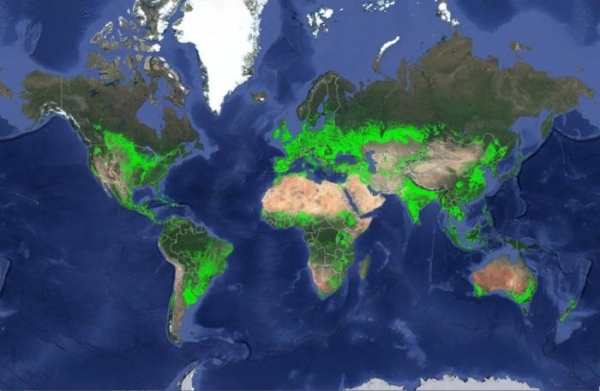A new computational framework developed in collaboration with Oak Ridge National Laboratory scientist Jiafu Mao provides a detailed assessment of ammonia emissions from global croplands and identifies practices that could curb release of the gas.
A new computational framework developed in collaboration with Oak Ridge National Laboratory scientist Jiafu Mao provides a detailed assessment of ammonia emissions from global croplands and identifies practices that could curb release of the gas.
Croplands are the largest single source of atmospheric ammonia, emitted from fields treated with nitrogen fertilizer. Ammonia can harm human health, acidify soil and waterways and contribute to biodiversity loss, food insecurity and climate change. However, the international study found that emissions could be cut by 38% without altering total fertilizer inputs, as detailed in Nature.
Mao helped devise a machine learning approach to improve ammonia emission estimates from wheat, corn and rice fields. The model enabled the identification of local best practices that could mitigate emissions, even in a warming climate.
Read more at: Oak Ridge National Laboratory
ORNL climate modeling expertise contributed to an AI-backed model that assesses global emissions of ammonia from croplands now and in a warmer future, while identifying mitigation strategies. This map highlights croplands around the world. (Photo Credit: U.S. Geological Survey)




